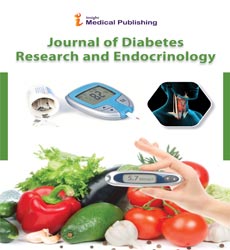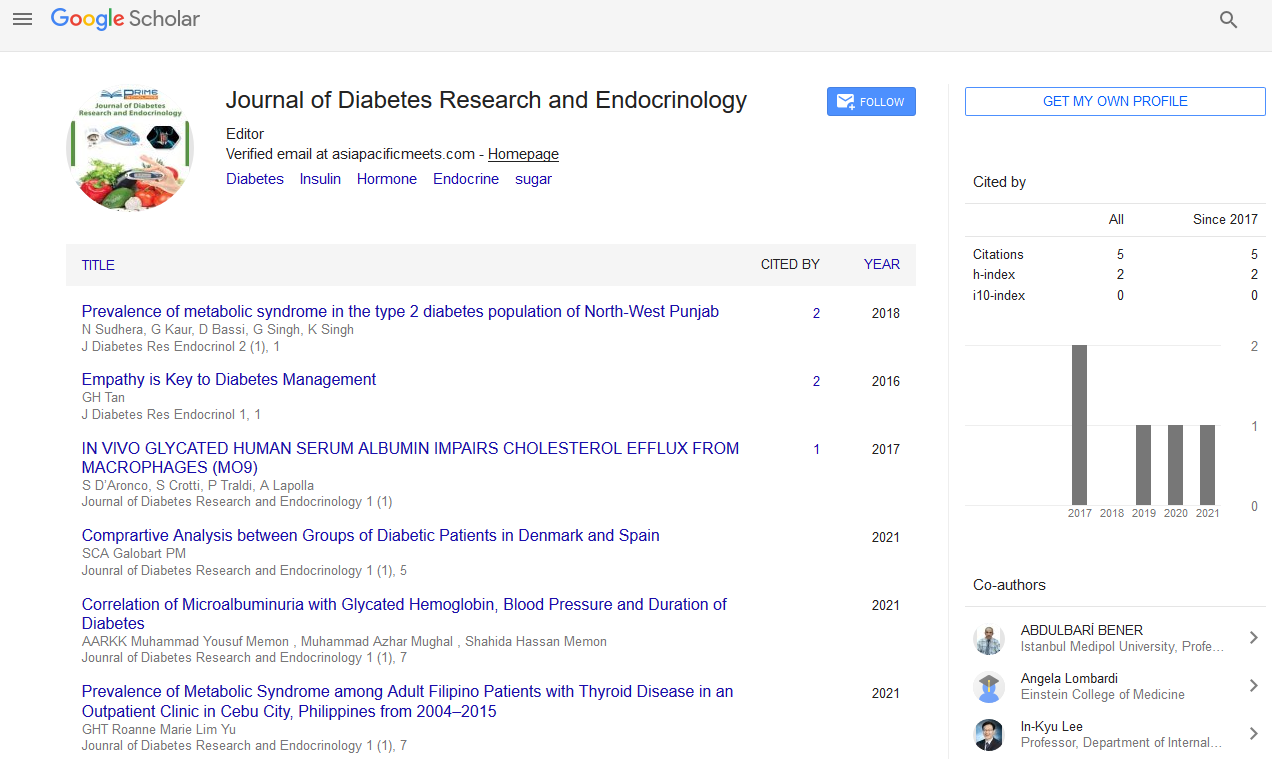David Cherney*
Department of Medicine,University of Toronto, Toronto, Canada
- *Corresponding Author:
- David Cherney
Department of Medicine,
University of Toronto,
Toronto,
Canada,
E-mail: david.cherney@nhu.ca
Received Date: August 02, 2021 Accepted Date: August 16, 2021 Published Date: August 23, 2021
Citation: Cherney D (2021) Inhibition on Metabolic and Cardiovascular Parameters. J Diabetes Res Endocrinol. Vol.5 No.4:1.
Description
The consequences for metabolic boundaries, like HbA1c, are
generally articulated in individuals with protected kidney work,
and constricted in those with persistent kidney infection (CKD)
coming about because of a decrease in glucosuria. Past these
glucosuria-intervened impacts, SGLT2i additionally actuates
intense natriuresis, which is maximal for the underlying 3 days,
and afterward returns back to benchmark. As an outcome of this
underlying natriuretic impact, nonetheless, plasma volume
diminishes unassumingly by roughly 7%, and afterward stays
beneath benchmark over the more extended term. For setting,
in a similar report, in the gathering treated with a thiazide, there
was sturdy impact on plasma volume at 12 weeks, which
recognizes these 2 sorts of natriuresis specialists. Head–head
plasma volume concentrates with SGLT2i versus circle diuretics
have not been distributed thus the overall impact of these 2
medication classes on cardiovascular hemodynamic in patients
with T2D isn't yet known.
Notwithstanding the significance of plasma volume
constriction according to pulse bringing down, plasma volume
compression may likewise be a significant middle person of the
decrease in HHF hazard, as proposed by examinations exhibiting
that hemo-concentration is answerable for an enormous part of
the cardiovascular (CV) advantage detailed in CVOTs. Attractive
reverberation imaging examines showing a decrease in sodium
content in the skin recommend an adjustment of the
nonosmotic sodium and lower absolute body sodium content
with SGLT2i. Plasma volume withdrawal, markers of hemoconcentration,
and a decrease in body sodium content may
consequently eventually have significant ramifications for HHF
hazard.
The decrease in distal sodium delivery to the macula densa
leads to less sodium reabsorption via the Na+/K+/2Cl–transporter on the luminal membrane surface, which is an
energy-dependent process, resulting in less ATP breakdown to
adenosine. In this part of the nephron, adenosine acts as a
vasoconstrictor via the adenosine 1 receptor. Under normal
physiological circumstances, a decline in sodium delivery to the
macula densa occurs as a result of effective circulating volume
depletion. Based on a decrease in vasoconstrictor activity, and
to preserve renal function under conditions of volume
depletion, the afferent arteriole dilates, leading to increases in
renal blood flow and glomerular pressure, thereby preserving
kidney function. However, in the setting of diabetes, in which
renal function, blood pressure, and circulating volume start out
at a normal baseline, afferent vasodilatation has been linked
with hyperfiltration, thereby predisposing to glomerular injury
over time.
Finally, they demonstrated that by blocking adenosine
signalling pharmacologically, the hemodynamic impact of
empagliflozin was entirely lost, indicating that the natriuresis-
ATP breakdown-adenosine-A1-receptor binding cascade is
required for SGLT2i to mediate changes in kidney function
associated with renal protection. Interestingly, blockade of other
preglomerular vasodilators associated with hyperfiltration nitric
oxide and prostanoids did not affect SGLT2i-related changes in
kidney function. In human translational physiology studies, to
define whether alterations in kidney function and hyperfiltration
reported in animals also occur in humans, we examined the
impact of empagliflozin on GFR and renal blood flow in young
adults with T1D and reported that, similar to observations in
animals, hyperfiltration and renal hyperperfusion are
significantly attenuated with SGLT2i, in conjunction with
increased urinary excretion of adenosine.

